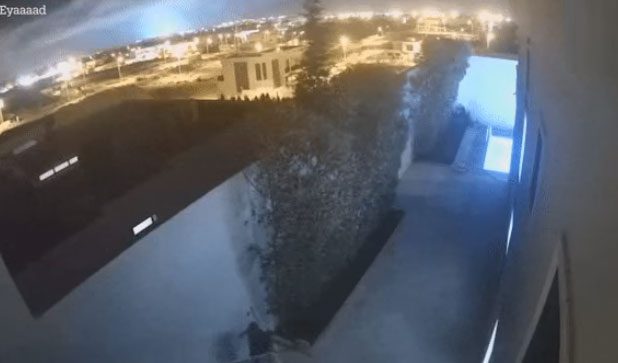Mysterious Blue Lights Appear Before the Devastating Earthquake in Morocco Last Week. Scientists are still unable to explain this phenomenon.

Bright blue lights flashed across the sky before the major earthquake in Morocco.
A powerful earthquake measuring 6.8 on the Richter scale struck the High Atlas region in eastern Morocco on September 8, resulting in at least 2,900 fatalities and approximately 5,500 injuries.
On social media, people are buzzing about videos showing bright blue halos appearing in the sky just before the earthquake occurred.
Experts believe this could be a “earthquake light” phenomenon.
No one knows for sure whether earthquake lights exist or what causes them. However, if these lights are proven to be linked to significant seismic activity, some scientists hope to use them to enhance early detection capabilities.
There are a few historical records documenting sky lights related to earthquakes from centuries ago.
According to the New York Times, previously recorded phenomena include brilliant flashes lasting about one second to fireballs that persisted for around one minute, exhibiting various colors.
Karen Daniels, a physicist at North Carolina State University, told the New York Times: “Many people have wondered about them for ages. It’s one of those persistent mysteries that has never been clearly explained.”
Thus, earthquake lights have long been regarded as a mystery. However, with the prevalence of surveillance cameras and mobile phones, the increased documentation has led more people to believe that this phenomenon indeed exists.
Mysterious lights were captured on camera before the 2021 earthquake in Mexico City, as reported by PBS. They also appeared in eastern Japan prior to the 2022 earthquake, as noted by The Guardian at that time.
Currently, there is more evidence suggesting that light flashes occasionally occur around earthquakes.
Geophysicist Friedemann Freund from the SETI Institute has studied 65 reports on “earthquake lights” collected since the 1600s. He believes that earthquake lights could be a complex form of static electricity.
He posits that when tectonic plates rub against each other, the friction can generate enough electric current to cause a discharge, resulting in the light flashes.
However, some scientists disagree with this explanation. The United States Geological Survey (USGS) is also cautious in interpreting the phenomenon.
Additionally, there are other explanations, such as initial shocks shaking power lines, producing an electrical arc phenomenon.



















































